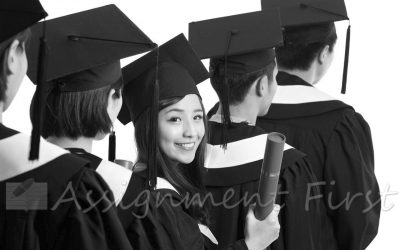个人陈述:东南亚的政治格局、艺术和文化
20世纪上半叶,东南亚的大部分地区被殖民。越南、柬埔寨和老挝曾经是法国的殖民地,英国在马来西亚和缅甸(旧称Burma)也有殖民地,印度尼西亚被荷兰和菲律宾的美国人殖民;只有泰国保持独立。在第二次世界大战期间,殖民势力的控制得到了放松,日本人为了推动这一地区的自由,开始推动尚处于萌芽阶段的独立运动。然而,日本在泰国、马来西亚、越南、缅甸、印度尼西亚等地的活动,确立了日本宣传独裁的动机,东南亚国家根本不准备在二战结束后重新开始殖民主义的镇压。东南亚各国在1945年至1957年期间获得了独立。但在20世纪以前,东南亚曾经有许多中等规模的著名城市和密集的水稻种植区,但与亚洲的南部和东部相比,东南亚的大部分地区仍然发展得很薄弱。这反映了周边国家的特点,相对较弱和巨大的边境,居住着移动的耕种者(不莱梅,1990年)。
民主或宪政领域开始于大多数东南亚国家独立后。但是,从1960年到1970年,共产主义和反共产主义政党之间的斗争给该地区带来了灾难。越南战争后成为共产主义国家,老挝也成为共产主义国家。70年代后期,柬埔寨遭受了红色高棉统治下的共产主义大屠杀。在其第一任总统的影响下,苏加诺(1901年至1970年)印度尼西亚有一个强大的共产主义王国(不莱梅,1990年)。
在共产主义时期,艺术的发展非常缓慢,而在缅甸军政府的压迫统治下,大多数艺术家在共产主义时期的越南和老挝实践社会主义。20世纪80年代以后,艺术家们获得了更多的自由,但两国都不鼓励艺术的现代化。红色高棉在柬埔寨的统治结束后,重要的艺术和知识分子生活也随之结束,而在他的统治下,文化生活欣欣向荣。在缅甸,艺术前景仍然非常有限。
在东南亚土著人中,传教活动的范围不断扩大,到20世纪中叶,大多数群体转向基督教。这种转变对当地的雕塑传统产生了毁灭性的影响,因为一些人停止了他们的创作,在某些情况下,他们的祖先创造的图像被破坏,而这些图像与新接受的基督教信仰相矛盾(Walters 2008)。尽管织工们开始倾向于使用人造染料,但与纺织有关的传统仍在蓬勃发展。在1970年代初,增加兴趣艺术和西方国家的土著居民的文化导致了许多交易商和收藏者获得不同的艺术形式在纺织品雕塑从东南亚国家,并成为个人收藏的一部分,或进入西方国家博物馆。
个人陈述 :东南亚的政治格局、艺术和文化
During the first half of twentieth century major portion of Southeast Asia were colonized. Vietnam, Cambodia and Laos used to house colonies of the French, British had their colonies in Malaysia and Myanmar (old name Burma), and Indonesia was colonized by the Dutch and the Philippines by the people of the United States; only Thailand remained independent. The grip of the colonizing power got relaxed during the period of World War II and the Japanese started promoting embryonic movements for independence in order to push freedom in this region. However, the activities of the Japanese in Thailand, Malaysia, Vietnam, Myanmar and Indonesia established the motive of Japan’s Propaganda to be autocratic and the countries of Southeast Asia were not at all prepared to recommence the Colonialist suppression after the end of World War II. All the countries of Southeast Asia got its independence during the period of 1945 to 1957. But before 20th century, the Southeast Asia used to have a number of medium size prominent cities and also densely established rice growing districts, but major portion of the Southeast Asia remained thinly developed compared to the south and east part of Asia. This reflects characteristics of peripheral states which are relatively weak and huge frontiers inhabited by shifting cultivators (Bremen, 1990).
Democracy or constitutional realm began in most of the countries of Southeast Asia post independence. But the battle between the communist and anticommunist parties cursed the region between the years 1960 till 1970s. Vietnam became communist country after the Vietnam War and Lao also became a communist nation. In the later part of 70s, Cambodia suffered due to the communism massacre under Khmer Rouge. Under the influence of its first president, Sukarno (who was between 1901 till 1970) Indonesia has a strong communist realm (Bremen, 1990).
During the communist period, the development of art was very slow, while in Myanmar during the oppressive military rule, most of the artists practiced Socialist in Vietnam and Laos during communism. After 1980s, artists were given more freedom but neither of the nation encouraged sense of modernisation in arts. After the end of Khmer Rouge in Cambodia, crucial art and intellectual life came to an end while under him there was an effervescent cultural life. In Myanmar, still there is very limited art prospect.
Among the indigenous people of Southeast Asia, scope for missionary activities increased and by mid of the 20th Century, majority of groups were transformed to Christianity. This transformation had a devastating influence on the local tradition of sculpture as several people stopped their creation and in certain instances destroyed images created by their ancestors which when contradicted with the newly adopted beliefs of Christianity (Walters 2008). But the tradition related textile continued to flourish although the weavers started favouring the use of artificial dyes. In the beginning of the 1970s, the increasing interest in art and culture of the indigenous people of Western countries resulted in many dealers and collectors to acquire different art forms in textiles sculptures from Southeast Asian countries and become part of their personal collection or entering the museum of the western countries.



